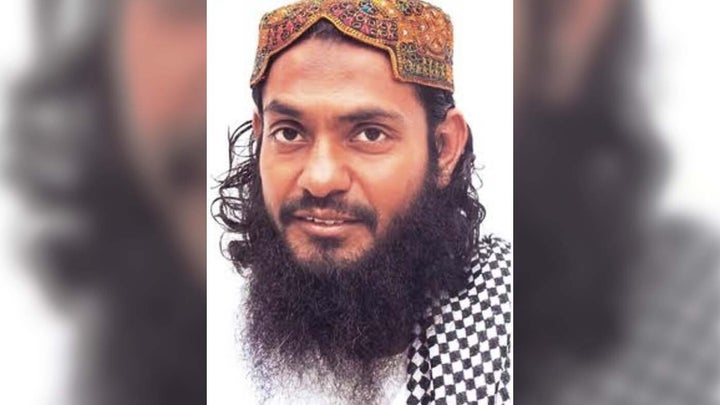
Next month will mark my 19th year of detention by the United States government, even though I have never been charged with a crime, let alone put on trial.
Earlier this month was the closest I have come to my “day in court,” when my lawyers presented my case to the Periodic Review Board. If the Board recommends my release from Guantanamo, even though this would be a recommendation from the U.S.’s national security agencies, whether I am released and how long this takes would still be up to President Biden. My fate lies in his hands.
Like everything here, what the Board does is secret. I have not had allegations put to me, so I cannot respond to them. I do know that from the start, my case was one of mistaken identity. Nearly two decades of my life have been stolen because the U.S. thought I was someone else. I was sold for a bounty to the U.S. based on the false claim that I was an extremist named Hassan Ghul.
The U.S. Senate’s Torture Report later revealed that when I was being tortured in the Dark Prison in Kabul into saying I was Ghul, the U.S. actually captured the real Hassan Ghul and brought him to the same prison. But in the end they let him go and sent me to Guantanamo. He apparently went back to what he had been doing before, and the U.S. killed him in a drone strike. Meanwhile, I am simply collateral damage in the so-called “war on terror.”
I have been effectively removed from the world. My wife has had to survive all these years without me. My children, now adults, grew up without their father. I have never met my youngest son, Jawad, who was born after I was detained. He is now 18 years old. I am allowed to have a Skype call with my family roughly once a month, but I have never even touched Jawad. Can any parent imagine that?
“What is my life? Is it life at all? My only means of peaceful protest is hunger strikes, which have brought me close to death. Today I am only about 79 or 80 pounds, with more than half of me gone.”
If I had to describe Guantanamo to the world, I would say it is a lawless prison where the U.S. has wasted $6 billion to imprison people without trial, earning nothing but a reputation for injustice. They now spend over $13 million a year just to hold me here. Imagine the good that could be done with that money, and the goodwill it could earn. Maybe they could even begin to compensate me for the torture I have suffered.
What is my life? Is it life at all? My only means of peaceful protest is hunger strikes, which have brought me close to death. Today I am only about 79 or 80 pounds, with more than half of me gone. I take off my prison shirt in my cell in front of the camera and lie on my steel bed, so the guards can see what they are doing to me. I look like one of the starving people in the films of famine in Africa. It is all I can do to physically express both my family’s suffering and my own. I am often paralyzed by weakness, unable to walk or move my body.
The response I get is a thick three-and-a-half-foot tube driven up my nose ― it’s thick so it hurts more when they pump liquid in faster ― and then pulled out after each feeding in the “torture chair” because that causes more pain. That daily experience sums up my life: a force-feeding procedure that is meant to be carried out kindly in a hospital, but has been amended to inflict intentional pain every day (and is described by the United Nations as torture itself).
It is the latest in a long series of torture methods, totaling more than 60, to which I have been subjected while in detention. In the CIA’s “Dark Prison,” which derives its name from the complete darkness in which we were held, a medieval method of torture was used on me. Designed to cause agony to “witches” and so-called heretics in centuries past, this method, known as the strappado, involved hanging me by my wrists to slowly dislocate my shoulders.
I am under no illusions that I am being force-fed out of any concern for my health. Rather, my death would be a scandal that would shed further light on the grave abuses of our fundamental human rights, and fuel the growing momentum behind the campaign for Guantanamo Bay’s immediate closure.
There was some fleeting hope after Biden’s promise to do just that. But it waned as the reality dawned that Obama made the same promise to no avail. One inmate was recently released ― the first during Biden’s presidency ― but hope is a luxury my family and I simply cannot afford. After the psychological suffering we have endured during my 19-year imprisonment, allowing ourselves to feel hopeful about my release, based on promises by a president that he has not yet fulfilled, could push us to the breaking point.
I try to distract myself ― from the fear that I will never escape this prison, from the feeling that the world has forgotten me ― by painting. But as I continue sketching empty glassware, I am filled with a sense of dread that Biden’s promise to close Guantanamo may be just as hollow as these glasses.
Ahmed Rabbani is a taxi driver from Karachi, Pakistan, who has been detained without charge by the U.S. for 19 years. The extensive torture to which he was subjected by U.S. personnel is detailed in the Senate Intelligence Committee Report on Torture.
Do you have a compelling personal story you’d like to see published on HuffPost? Find out what we’re looking for here and send us a pitch!
